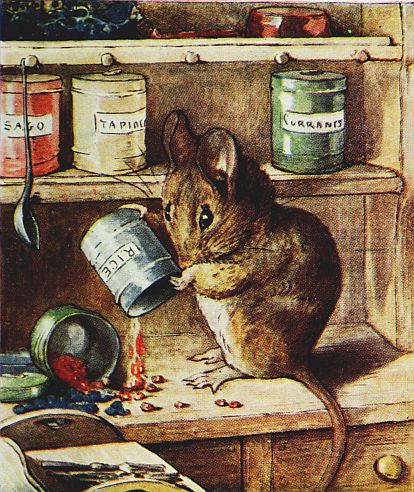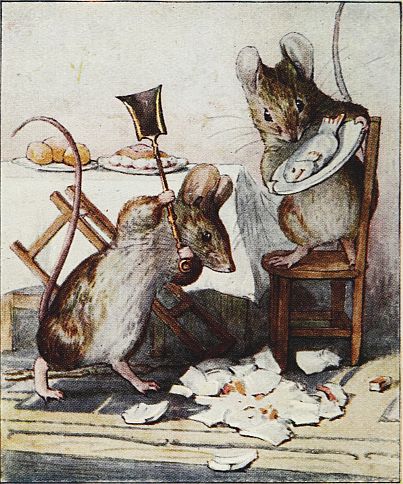Hunca Munca

One in a series of posts dedicated to pop-culture depictions of mice — as symbolic representations of abject other, rebellious scamp, intrepid explorer, scrappy survivor, resourceful collaborator, and habitat experimenter — from 1904–2003.
Beatrix Potter’s The Tale of Two Bad Mice (1904) is the early twentieth century’s most important example of the Mouse as Rebellious Scamp trope. (Read it here.)
Here we find two adorable mice — Hunca Munca and her mate — vandalizing a fussy Victorian dollhouse in a kind of anarchic, proto-punk frenzy — smashing dishes, throwing clothing out the window, shredding the down comforter. Wow!
What audiences at the time — mollified, one imagines, by the story’s tacked-end contrite ending — didn’t know was that the author at that very moment in her life yearned to free herself of her domineering parents, who’d groomed her to be their home’s permanent resident and housekeeper.

There’s also a phildickian/Truman Show aspect to this story. What sets the mice off is the fact that all this domestic splendor turns out to be an illusion and a sham:
Hunca Munca tried every tin spoon in turn; the fish was glued to the dish. Then Tom Thumb lost his temper. He put the ham in the middle of the floor, and hit it with the tongs and with the shovel — bang, bang, smash, smash!
PS: SEMIOVOX friend Annalee Newitz has credited this Beatrix Potter story with helping to inspire the rebellious talking animals of her sf novel The Terraformers (2023).

